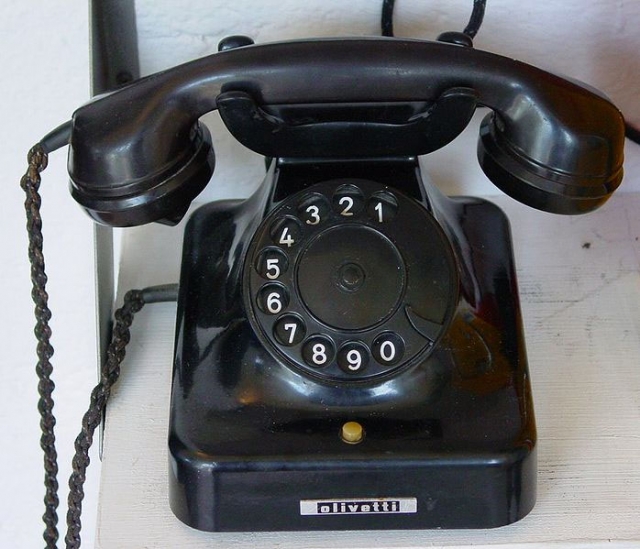Using objects and writing KS1 exemplar: Old and new telephones
Exemplar

Lynn Cowell's Year 2 class were doing a project on old and new telephones, with the primary aim of developing the children's skills in investigating objects. During the project, I visited the class once a week.
Lynn and I began by showing the children four telephones: a candlestick phone, an old bakelite phone, an early plastic phone and a cordless phone.
Working with the telephones
Observing differences
The first activity was a discussion about the differences between the telephones. The children examined each phone and quickly noted differences in shape, weight and colour.
Chronology
Now the class moved to considering which phone was the oldest, which the most modern, and the reasons why they thought this was so. While there was agreement on which was the most modern phone, opinions differed about which was the oldest.
How does it work?
At the end of the session Lynn asked the children to try to work out how the candlestick phone might have been used to make a call. Children had already discovered that this phone had no means of dialling a number. During the following week, the children were given time to examine and play with all the phones. When I next visited the class, the children explained how they thought the candlestick phone might have been used. A variety of interesting ideas were put forward, some quite plausible and others not. The class discussed each idea in turn.
Matching pictures and objects
We moved on to look at some large pictures of old phones. We asked the children to try to match up the pictures with the four phones we had in class. Some of the pictures were different from our phones, and in these cases we asked the children to place the pictures near to the phone they thought was similar - or, if completely different, to place the picture in a pile on its own. This was a useful way of getting the children to look carefully at the objects and pictures.
Clues from a picture
Towards the end of the lesson, I produced a large picture of a 1927 telephone exchange. What did the children think this picture was about? Was it a picture of something today? If not, why not? What was happening in the picture? The questions prompted a lot of discussion, and the children came up with ideas that we noted on the board. The children made links with the candlestick phone, but not as yet with the idea of a telephone exchange.
See the photo here Telephone exchange, Rugby, 1924
Role play
During the following week, Lynn the teacher spent time using role play and discussion to help the children understand the work of the switchboard operators in a telephone exchange.
Pupil demonstrations
On my next visit, several children took it in turns to demonstrate making a call using the candlestick phone.
Each demonstration was followed by discussion. What exactly had the caller done to make the call? What did the switchboard operators do?
These role play demonstrations and accompanying discussions enabled the children to refine their understanding of how candlestick phones and telephone exchanges worked. By now the children were confidently and correctly using terms like ‘switchboard', ‘ear piece', ‘operator', ‘headphones', ‘receiver', ‘transmitter', and ‘press button'.
The writing
During the discussions, Lynn had built up a vocabulary bank on the board for the children to refer to.
Lynn now asked them if they could write out instructions on how to use a candlestick telephone. Below are some examples of what the children wrote.
The detailed attention given by the children to the sequence of operations in making a call are the result of the time spent working through the various demonstrations with the class.
Download the attachment below
Attached files:
- Old Telephone Pupils Work
32.1 KB PDF document

